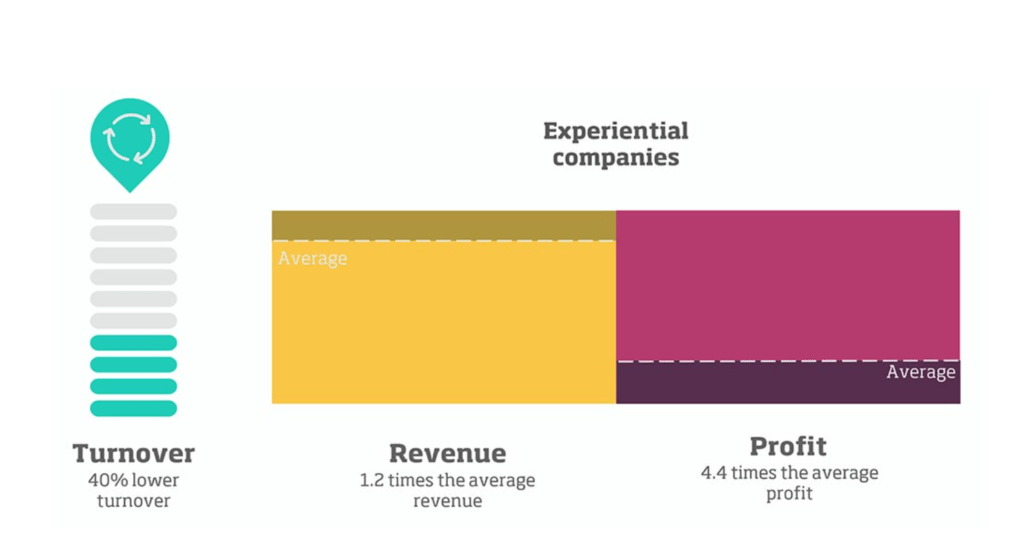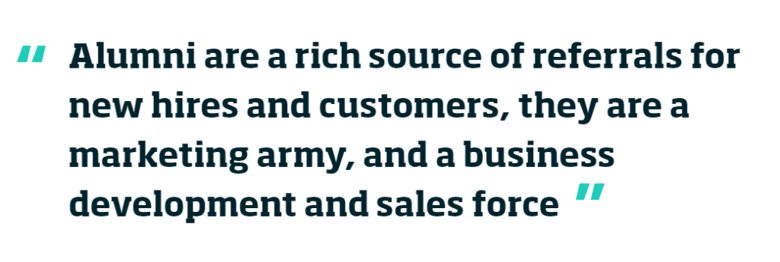Applying Remote Work Lessons to Alumni Engagement: The Importance of Personal Connection
How alumni communities can thrive with an emphasis on personal connections and a selection of strategies for creating meaningful interactions.
Read more
As organizations face difficulties in hiring and retaining staff, employers are not paying enough mind to the benefits that effective offboarding yield.

In a tighter labor market, companies should pay closer attention to offboarding alumni, as 'boomerang' hires can yield substantial benefits for businesses.
The labor market is rapidly thawing and organizations across the globe face difficulties not just in hiring new staff, but hanging on to existing workers. And yet, few employers pay much mind to the separation process when an employee leaves the organization, despite the fact that effective 'offboarding' can yield substantial benefits for businesses.
For employers, most of the focus has been on onboarding new hires and retaining and upskilling those employees, however the exit interview should not be the last interaction you have with departing employees.
Research shows that “experiential companies” that offer a positive employee experience in terms of the cultural, technological and physical environment have 40% lower turnover, 1.2 times the average revenue and 4.4 times the average profit than those companies which don’t.

These firms, which include Facebook, Apple, Google and Amazon, have redesigned their organizations to be places where people want to show up for work, an important step in cultivating and maintaining lifelong employee relationships.
That can yield substantial benefits for businesses. Corporate alumni are a rich source of referrals for new hires and customers, they are a marketing army and a business development and sales force. When employees leave a company they are customers, advocates and evangelists.
The current economic environment has heightened the need for such networks. In many countries, attrition rates and job vacancies are increasing and companies are facing skills shortages.
According to IDC, a research group, 72% of former employees would return happily to their own firm again. These “boomerang” employees reduce the time it takes to fill positions by half, and they’re also 32% more likely to recommend the company to other potential recruits. Citi told us they source 12% of their annual recruits from their alumni network, with the average cost saving per hire being $75,000.

And offboarding is becoming more efficient as companies recognize that creating community at scale requires tech-driven solutions. The last major part of the employee lifecycle to escape technological disruption is finally going digital, as artificial intelligence automates the manual drudgery of building communities.
The first step is putting together an alumni steering group, to drive engagement and take responsibility. Made up of staff and alumni, the committee will set out the goals and ambitions of the network, while defining why alumni matter to your organization.
Seek senior, internal support for the initiative: increasingly, HR departments are driving alumni networks given that vacancies are growing, attrition is rising and “boomerang” hires come with lower hiring costs.
The steering group should also reflect on the whole employee experience. The good vibes from a positive onboarding process will feed through to the offboarding process.
Make it clear from the moment new hires join that a network exists to support them once they eventually move on. Some companies choose to include employees in their alumni communities too. Google X, for example, brings in alumni to talk about their experience at the search giant’s “moonshot factory” with new employees as part of the onboarding process.
Informal networks probably already exist on social media platforms, and will be an easy source of early members. Those communities are great early evangelists for alumni networks and can encourage their members to sign up by communicating the benefits of doing so, such as access to discounts, deals and events. It will be important to keep sharing information about the success of alumni and how the platform is helping to facilitate those wins.
Many corporations have traditionally hosted alumni gatherings, but through lockdown they have had to adapt. Rothschild & Co, the financial advisory group, sent its UK based alumni a “spring growing kit”, a mix of herb and flower seeds with instructions for planting, to celebrate the lifting of some national Covid restrictions. It was a simple, low cost yet thoughtful way of making alumni feel included and part of the community during a difficult time.
Companies, especially those making redundancies, should be humanely offboarding their people by giving them guidance on how to strengthen their CV to find alternative employment, and putting them into a helpful community of their peers. Like many retailers, Harrods had to downsize at the start of the pandemic. So it invited staff to its alumni network, ‘Forever Green and Gold’, to support employees and ensure they were easy to reach when employment opportunities opened up again.
Platforms exist to take the hassle out of building and growing an alumni community. Technology can do the hard work: tracking, engaging and understanding former employees. Time spent on alumni initiatives should be strategic, and it should add value to the business, rather than managing changes of addresses and email details on a spreadsheet.
But technology alone is not enough; it represents just 50% of the work required. An alumni platform without an engagement strategy leads to stale data. A platform solely focused on a transactional relationship with alumni does not thrive.

It’s hard to run a vibrant community if you don’t know who your people are. Ask yourself: what constitutes an alumnus? Consider who you want to join your network, whether its current or former employees, contingent workers, freelancers, contract or seasonal workers.
Each will have different needs, expectations and preferences in terms of communication (method, frequency, content). Creating alumni personas that spell out these preferences by group (freelancer, new hire, old hand, for instance) can help you tailor content and marketing strategies.
Alumni need and want a contextual and relevant experience. Technology allows you to segment the network by seniority, geography, function, or the employee networks they were involved in. Think about the content you are sharing. People don’t just want to hear corporate news. You cannot expect employees, especially busy senior executives, to join the network if it’s one-dimensional and doesn’t offer them any tangible value.
A senior financial professional in Australia doesn’t want to hear about an event for junior book-keepers in France. An alumnus in Hong Kong doesn’t want to hear about a get together in Argentina. Customization is key. The bank JP Morgan, for example, has research-themed content that targets alumni in finance and business who are keen to still access this valuable resource even after they leave the company.
Evaluating the progress and success of an alumni program is vital. Access to analytics and reporting helps to understand the networks’ users, how they are engaging, and the most relevant activities and content driving value.
This information allows alumni program managers to better drive engagement and target specific habits and user segments. It also helps to align your users directly to organizational objectives, such as recruiting or referring a business opportunity or sales lead.
This article originally appeared in I by IMD Magazine, the Knowledge Hub of IMD.
NEWSLETTER


How alumni communities can thrive with an emphasis on personal connections and a selection of strategies for creating meaningful interactions.
Read moreJanuary 15, 2025
Bringing former employees back into the company fold doesn't have to be a challenge if you follow these simple steps for the best reboarding...
Read moreOctober 2, 2023
Weaving your corporate alumni community into your company strategy as a business resource represents an opportunity to bolster the business from...
Read moreApril 28, 2023
Build new revenue streams, save on recruitment and enhance your employer brand, all through the power of alumni.